Ethical Leather Is the Biggest Fight in Fashion Right Now
From mushrooms to apples to the real thing, brands are in an arms race to upgrade the textile, while keeping it luxurious as ever.
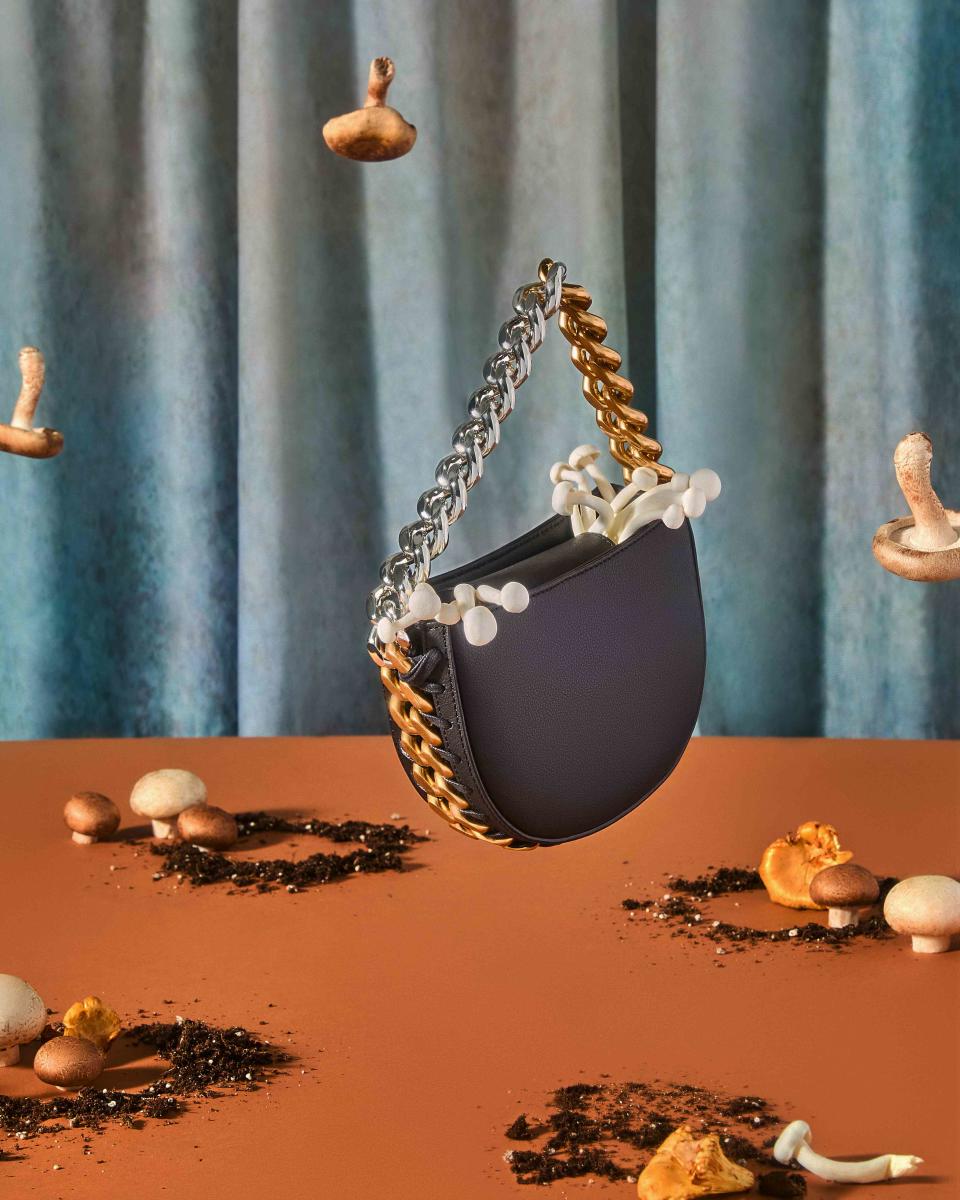
Hannah Rosa Lewis-Lopes
"Six thousand dollars? It's not even leather!" an excitable Joan Cusack yells at Melanie Griffith in a scene from 1988's Working Girl. She was talking about a sequin dress but the star of the line is the concept of leather itself, which has always been a symbol of value, before and since. Leather is a premium textile in fashion, used to make some of the highest-end and most expensive garments and accessories (see: Hermès Birkin bags and probably also the bag you carried to work today).
But in the late '90s and 2000s, questions around the ethics of using animal skin for our bags, shoes, and clothing gained momentum. Not only is industrial cattle farming harmful to some of the animals due to reported abuse and neglect, but the raising of cows and tanning of the skin also has a massive environmental impact, from methane gas emissions to deforestation for farming and water usage. In response, many brands introduced vegan leather, labeling it a cruelty-free alternative to the real thing and elevating the sub-par image of "pleather" to something not only churned out by fast-fashion but made by covetable name brands, while still being cheaper to make and buy than the real thing.
But while animal-friendly PVC leather had a moment in the sun, it hasn't been some magical alternative so much as another cause for some of the same issues. It's essentially plastic, destined for landfills and the water supply.
In the last decade, as awareness about fashion's contribution to the climate crisis has become more of a concern for customers, brands are looking to innovate the leather they use while holding on to the luxury experience and hand-feel of the real thing. Instead of turning their backs on fashion's most prized material, the industry has entered an arms race to upgrade it, and literally dozens of alternative styles and practices have sprung up to meet that need.
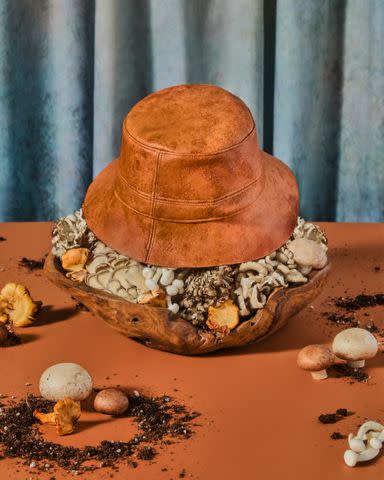
Hannah Rosa Lewis-Lopes / Nick Fouquet hat.
First came mycelium, or mushroom leather. It's a textile grown in trays from mushroom cells, and it mimics the durability and feel of leather. While there have been many companies creating it, MycoWorks has been at the top of the game due to its innovations in sustainable agriculture and produces textiles used by brands like Hermès and Nick Fouquet. "The power needed to grow mycelium is far, far lower — orders of magnitude lower — than plants. So whereas vertical farming is challenged by the intense energy use, because you're replacing the sun with indoor lighting, we don't have that issue with mycelium," says Matt Scullin, CEO of Mycoworks. The result is something that has the buttery feel of an expensive leather accessory (and even the smell of it as well), if you're wondering how a mushroom can turn into a luxury handbag.
"Reishi [a brand name mycelium textile made by Mycowords], because of the high quality that we've been able to achieve with fine mycelium, is positioned as a premium material, one of several options for high quality natural materials that one can fabricate with," he says. "You'll see a range of looks because the material is quite versatile."
The brand has certainly innovated the industry in terms of technology and visibility, but they are not the only ones developing this kind of product. Stella McCartney, for example, which has been a vegan brand for 21 years, developed a collection of mushroom leather products called Mylo. The brand works with Bolt Threads to create products ranging from bags and shoes to dresses. The Mylo bag is a great example of how these leathers have been easily integrated into luxury — especially when a certain brand name is attached.
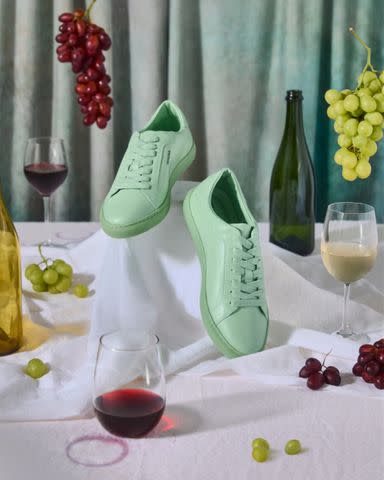
Hannah Rosa Lewis-Lopes / Pangaia shoes.
Outside of mushrooms, other brands have utilized different fruit skins as a leather alternative. Pangaia recently released a shoe made from grape skins. The upper, lining, and insole are made from discarded wine grapes and stems from Italy. (Meanwhile in Provence, Brad Pitt’s making skincare from the grape stems from his vineyard — so many chic uses for grape waste!) But back to Pangaia's alt-leather textiles: The result is a structured, leather-like fabric that doesn't look all that different.
If you're wondering if fruit and fungi leather is what all your shoes and handbags could be made out of in the future, though, Scullin of Mycoworks notes that's probably not gonna happen. Real leather is still a premium product in fashion and a byproduct of the beef industry, so there are waste-reduction reasons to keep on making it. That's why several brands have tried to innovate animal skin leather as well.
"There's no farming done, especially in developing countries, just to skin the animals. The entire industry is the byproduct of other industries. We can contribute by just minimizing waste." — Hirra Babar, WARP
Koio, an Italian shoe brand beloved by celebrities like Emily Ratajkowski, started using regenerative farming for its leather in 2020. This type of farming, where cows are not densely herded in the way they would be in industrial farming, has been used for centuries.
Co-founder Johannes Quodt explained the process on a call with InStyle from his store in Manhattan's Nolita neighborhood. "In regenerative farming, the cow is not separated and isolated from the rest of the world, but it's integrated in an ecosystem in a way that is evolutionarily sensible. In regenerative farming, cows are not in stables and not isolated where they are emitting methane and producing waste, but they're integrated in the environment," he explained. He found a farm in Switzerland that could provide him with the skins from cows (his shoes are made in Italy, so sourcing from farms in Europe was imperative). The brand has released two collections of regenerative shoes with plans to do more if they can continue to source responsibly.
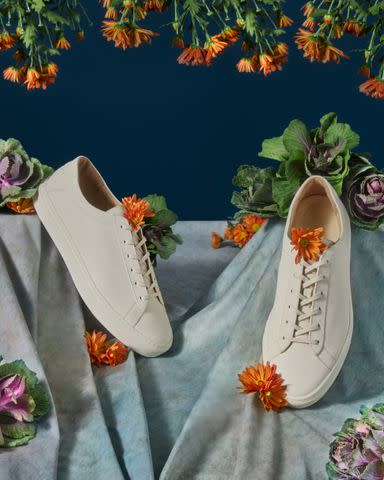
Hannah Rosa Lewis-Lopes / Koio shoes.
Other brands, such as WARP, use deadstock leather that comes from farms in Pakistan near the factories that make the bags. Founder Hirra Babar explained on a call with InStyle, that she set out to make an already existing industry better. Pakistan, where her brand is based, is one of the largest exporters of beef in the world. Leather is a secondary market, and most of the money from that is not going back to the country. "We have easy access to raw material, but we haven't seen a lot of value addition coming in this area, especially when it comes to high fashion," she explained.
Babar acknowledges that plant-based leather is a big part of fashion's future, and something she is looking to utilize as well. Still, she believes there is room to improve on the already existing leather industry. "There's no farming done, especially in developing countries, just to skin the animals. The entire industry is the byproduct of other industries. We can contribute by just minimizing waste and using the deadstock, upcycling and recycling," she concluded.
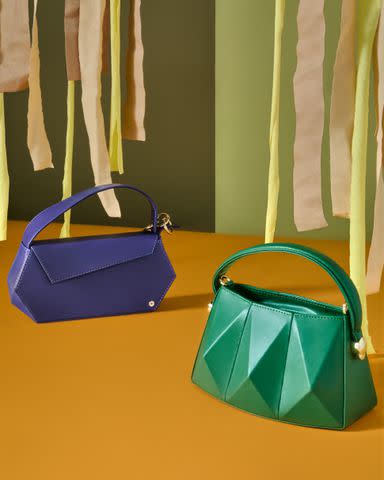
Hannah Rosa Lewis-Lopes / Warp bags.
As Babar mentioned, upcycling is something you're likely to see more and more of as brands try to address the impact of sourcing new materials. Reco, a brand founded by former Balenciaga and Chloe designer Bea Recoder, is doing just that. "At the moment, we only use lambskin nappa leather to have coherence in our collections, which is one of the most luxurious materials due to its soft suppleness. The interesting part of the project is that we don't produce the leather, but we use what has been already produced," she explained. The bags take the idea of upcycling, and use it as a design feature. "Usually, there is a lot of material waste because of the way bags are constructed, so in order to get the most out of every leather skin, I've created a patchwork-inspired technique that allows me to cut the leather in small pieces utilizing all parts of it," she adds.
Others, like footwear brand Nomasei, use a variety of techniques to shift how they produce. “The fashion industry typically looks for the cheapest materials to lower the costs and increase margins. We do the opposite,” Paule Tenaillon, cofounder of Nomasei explained via email. “We use a few different types of leathers including upcycled leathers, [REACH] certified and metal-free leathers. Whenever possible we use deadstock leathers from big luxury houses.”
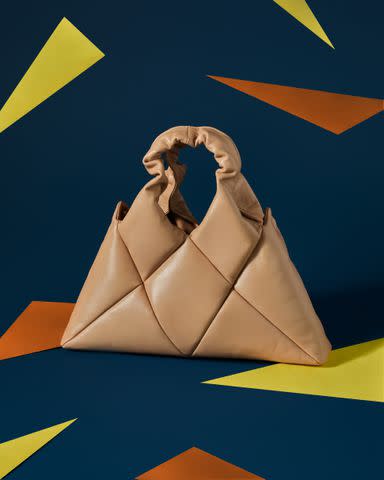
Hannah Rosa Lewis-Lopes / Reco bag.
While leather is simultaneously one of the most sought-after textiles and the most controversial, a change to the existing industry around it seems to be something most can agree on. From innovations in the actual material to improving the often toxic tanning process, there are dozens of avenues brands can take.
What’s more, is that just like anything else in fashion, the end product of a leather good is the result of hundreds of different people with specialized skills and jobs. Improving the way it's made is an imperative part of fashion’s future — not just for discerning consumers who want the best, but for those whose livelihoods, and lives, depend on crafting what it is we want to wear.
Photographs
Hannah Rosa Lewis-Lopes, assisted by YC Dong
Styling
Alyssa Hardy
Creative Direction & Prop Styling
Jenna Brillhart
Senior Visuals Editor
Kelly Chiello
Associate Photo Editor
Amanda Lauro
Senior Editorial Director
Laura Norkin

